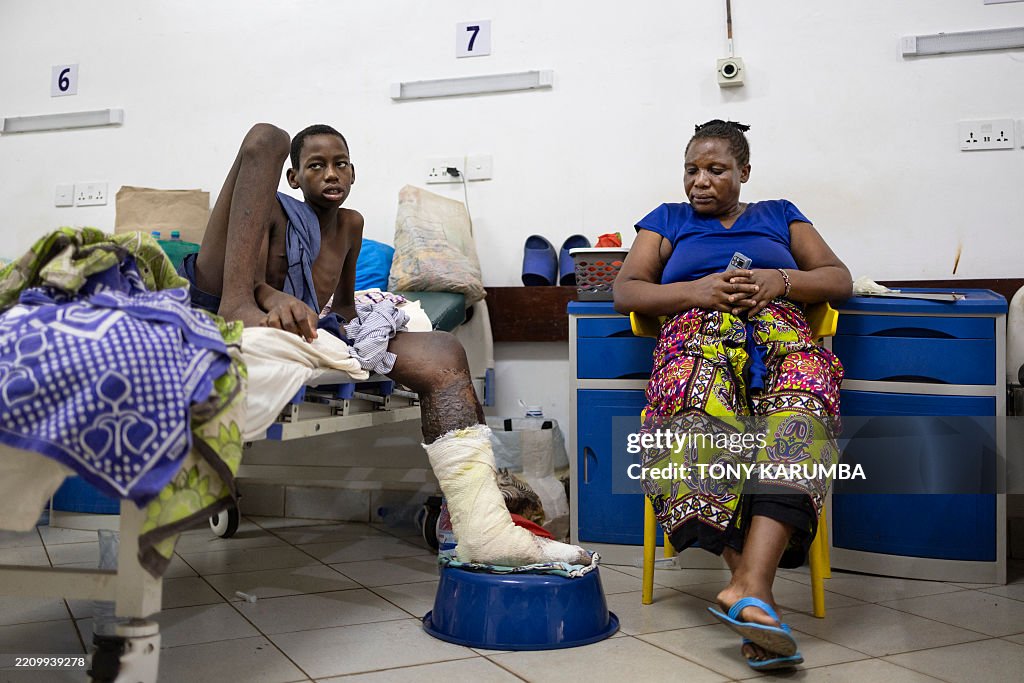KENYA-HEALTH-ANIMAL-SCIENCE-SNAKES
Shukurani Konde Tuva (L), 14, sits on his hospital bed, suffering with necrosis to the tissue on his left-leg caused by the Cytotoxic venom from the bite of a Puff adder snake at their home several weeks prior, as his mother, Mariamu Kenga (R), 43, reacts to the site of the injury at Malindi sub-county hospital in Malindi on April 7, 2025. The World Health Organization (WHO) categorized snakebite envenomation into the Category A of the Neglected Tropical Diseases due to high morbidity and mortality. Africa is amongst other regions that have low to non-availability of antivenom therapies. The Kenya Snakebite Research and Intervention Centre within the Institute of Primate Research (KIPRE) is in a race to research and develop antivenom locally, a first for Kenya and Eastern Africa, that have been over-reliant on imported antivenom from mainly Mexico and India despite wide-spread inefficacy as treatments in one region often do not effectively treat snake bites in another region. (Photo by Tony KARUMBA / AFP) (Photo by TONY KARUMBA/AFP via Getty Images)

PURCHASE A LICENCE
How can I use this image?
£275.00
GBP
Getty ImagesKENYA-HEALTH-ANIMAL-SCIENCE-SNAKES, News Photo KENYA-HEALTH-ANIMAL-SCIENCE-SNAKES Get premium, high resolution news photos at Getty ImagesProduct #:2209939278
KENYA-HEALTH-ANIMAL-SCIENCE-SNAKES Get premium, high resolution news photos at Getty ImagesProduct #:2209939278
 KENYA-HEALTH-ANIMAL-SCIENCE-SNAKES Get premium, high resolution news photos at Getty ImagesProduct #:2209939278
KENYA-HEALTH-ANIMAL-SCIENCE-SNAKES Get premium, high resolution news photos at Getty ImagesProduct #:2209939278£375£150
Getty Images
In stockDETAILS
Restrictions:
Contact your local office for all commercial or promotional uses. Full editorial rights UK, US, Ireland, Italy, Spain, Canada (not Quebec). Restricted editorial rights elsewhere, please call local office.TO GO WITH AFP STORY BY Mary KULUNDU
Credit:
Editorial #:
2209939278
Collection:
AFP
Date created:
07 April, 2025
Upload date:
Licence type:
Release info:
Not released. More information
Source:
AFP
Barcode:
AFP
Object name:
AFP_42E98JX
Max file size:
4200 x 2800 px (35.56 x 23.71 cm) - 300 dpi - 6 MB